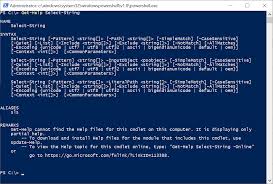When it comes to executing commands on remote computers using PowerShell remoting, you have a few different options to choose from. Here are three commonly used methods:
Invoke-Command: TheInvoke-Commandcmdlet allows you to run commands or scripts on one or more remote computers without entering a remote session. It is suitable for executing commands in parallel on multiple remote computers. Here’s an example:
Invoke-Command -ComputerName RemoteComputer1, RemoteComputer2 -ScriptBlock { Get-Service }This command will retrieve a list of services from both “RemoteComputer1” and “RemoteComputer2”.
Enter-PSSessionand direct execution: You can use theEnter-PSSessioncmdlet to establish a remote session with a target computer and directly execute commands on that remote session. Here’s an example:
Enter-PSSession -ComputerName RemoteComputerName -Credential UserName
# Now you are in the remote session
Get-Service
# Run other commands
Exit-PSSessionReplace “RemoteComputerName” with the actual name or IP address of the remote computer, and “UserName” with the appropriate credentials.
Invoke-Commandwith a script file: If you have a PowerShell script file that you want to execute on remote computers, you can use theInvoke-Commandcmdlet with the-FilePathparameter. Here’s an example:
Invoke-Command -ComputerName RemoteComputer1, RemoteComputer2 -FilePath "C:\Scripts\Script.ps1"This command will execute the script located at “C:\Scripts\Script.ps1” on both “RemoteComputer1” and “RemoteComputer2”.
Executing commands on remote computers using PowerShell remoting allows you to run commands and scripts on one or more remote machines from your local computer. PowerShell provides several cmdlets that you can use for this purpose. Here’s how you can execute commands on remote computers:
Open PowerShell as Administrator:
To perform remote command execution, you need to run PowerShell with administrative privileges. Right-click on the PowerShell icon and select “Run as administrator.”
Establish a Remote Session:
Before executing commands on a remote computer, you need to establish a remote session using the New-PSSession cmdlet. This cmdlet creates a persistent connection to the remote computer. For example, to establish a session with a computer named “RemoteComputer”, run the following command:
$session = New-PSSession -ComputerName RemoteComputer
The `$session` variable will store the session object, which you can use to execute commands on the remote computer.
Execute Commands:
Once you have established the remote session, you can execute commands on the remote computer using the Invoke-Command cmdlet. Here's an example that retrieves the list of running processes from the remote computer:
Invoke-Command -Session $session -ScriptBlock { Get-Process }The -Session parameter specifies the remote session object, and the -ScriptBlock parameter contains the commands to be executed on the remote computer.
Close the Remote Session:
After executing the required commands, it’s a good practice to close the remote session to release system resources. Use the Remove-PSSession cmdlet to close the session. For example:
Remove-PSSession $session
“`
This command removes the session associated with the $session variable.
You can also execute commands on multiple remote computers simultaneously by establishing sessions for each computer and then using the Invoke-Command cmdlet with the -Session parameter for each session.
Additionally, you can execute commands using alternate credentials by specifying the -Credential parameter with appropriate credentials for the remote session.
By following these steps, you can execute commands on remote computers using PowerShell remoting. This allows you to manage and automate tasks across multiple machines efficiently.
Remember that when executing commands on remote computers, you need to ensure that PowerShell remoting is enabled on the target computers and that you have the necessary permissions to access and execute commands remotely.
By leveraging PowerShell remoting, you can efficiently execute commands on remote computers, simplifying administrative tasks, and automating management operations across multiple machines.
